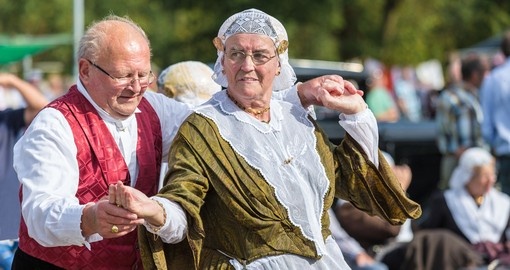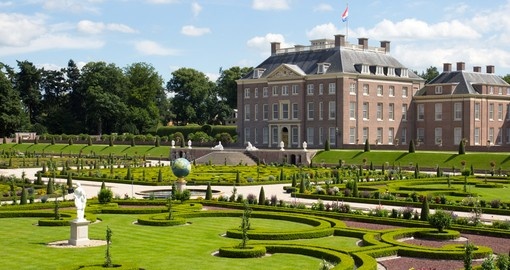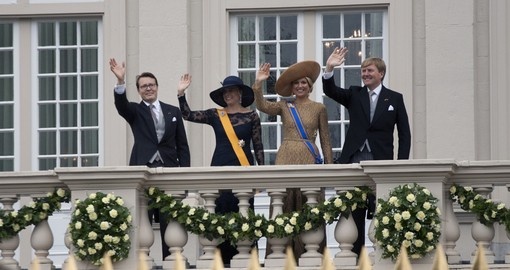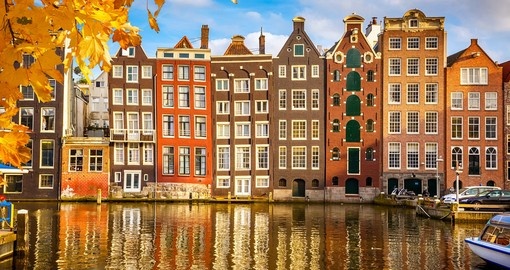Netherlands History
Three tribal groups, Belgae, the Batavii and the Frisii, are the first known inhabitants of what is now the Netherlands. These groups maintained a relatively safe existence because of the rivers, lakes and wetlands that surrounded them, making it incredibly difficult, if not impossible, for invaders to attack. This changed when Julius Caesar and his Roman armies were successful in their campaigns against both the Belgae and the Batavii. While the tribes proved to be a difficult conquest, they flourished under the Romans.
The 5th century brought more invasions in the form of the Saxons and Franks. Initially, the Frisians were successful in repelling the advances, but the Netherlands eventually came under the Charlemagne Empire. This empire was responsible for bringing Christianity to the area in the 8th century. When Charlemagne died at the beginning of the 9th century, the Low Countries territory was divided into small states controlled by dukes and counts.
As time passed, the economy grew and the Netherlands became a successful area. The 13th and 14th centuries were a time of building castles and other important structures. Just as infrastructure grew, so too did the power of the Catholic church. Beginning in the 14th century, Amsterdam emerged as a leading city as a result of strong workers and prosperous trading.
The 15th century witnessed a power shift in the Netherlands as Protestantism began to replace Catholicism. This change happened at the same time that the Lower Countries came under Charles V, the King of Spain and a Catholic Habsburg emperor. A Catholic monarch did not suit the Netherlands, which had become a major player in the Reformation. In 1555, Charles relinquished the throne to his son, Philip II.
Philip II was determined to topple the Reformation by hunting for heretics. Much of the Dutch population was increasingly unhappy with the treatment they were receiving from their monarch and looked to rebel. A resistance movement led by William of Orange (a count of Holland) was launched. The Union of Utrecht in 1759 provided the basis on which Dutch nobles agreed to fight together. By the 17th century, the part of the country that had been known as the Spanish Netherlands was successful in becoming the United Provinces.
For the first three-quarters of the 17th century, the Netherlands enjoyed a “Golden Age”. With the establishment of the United East India Company in 1602, the Dutch departed on many successful explorations and trading missions. They reached the Spice Islands (Indonesia) and became a very important maritime player.
The Dutch Year of Disaster followed this “Golden Age” in 1672 in which France invaded by land and the English attacked by sea. The war lasted from 1672-78 before the Dutch were plunged into the Spanish War of Succession 1701-13). The country’s economy was drained and the zeal they once had for exploration turned into conservatism in an effort to save money.
The Batvarian Republic was established in 1795, but was short-lived as Napoleon brought in his brother to be king of the Netherlands in 1806. In 1814, the House of Orange was recalled with the goal of a constitutional monarchy. Once Napoleon was defeated in 1815, the northern and southern provinces were reunited.
When war struck Europe in 1914, the Netherlands remained neutral. During the Second World War, the Nazis invaded the Netherlands in 1940. It is estimated that during this time, more than 100,000 of 140,000 Jews were murdered. This horrible occupation spurned one of the most advanced underground movements in Europe, which eventually helped with liberation.
Following the war, many developments happened in the Netherlands including a progressive social welfare system. Today, the Netherlands attracts many tourists and visitors who come to enjoy a vibrant culture and incredible beauty. Home to many museums, bike lanes and rich history, the Netherlands is a destination just waiting to be explored.
Netherlands Travel Information
At Goway we believe that a well-informed traveller is a safer traveller. With this in mind, we have compiled an easy-to-navigate travel information section dedicated to the Netherlands.
Learn about the history and culture of the Netherlands, the must-try food and drink, and what to pack in your suitcase. Read about the Netherlands's nature and wildlife, weather and geography, along with 'Country Quickfacts' compiled by our travel experts. Our globetrotting tips, as well as our visa and health information, will help ensure you're properly prepared for a safe and enjoyable trip. The only way you could possibly learn more is by embarking on your journey and discovering the Netherlands for yourself. Start exploring… book one of our Netherlands tours today!
Get a Trip Quote Order a Brochure




















